Ivy gourd: Benefits, Ayurveda Usage, Remedies, Research, Side Effects
Ivy gourd, botanically Coccinia indica, is known in Ayurveda as Bimbi. This well known vegetable plant is described for the treatment of intestinal worms, skin diseases, for inducing emesis and purgation in panchakarma therapy.
Latin Name- Coccinia indica W & A, Coccinia grandis
Family- Cucurbetaceae ( Kosataki kula)
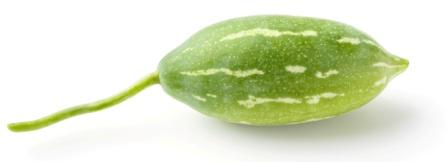
Table of Contents
Vernacular names
Names in different languages:
Hindi name- Kunduru, Tirkol
English Name- Ivy gourd, Scarlet gourd, Kowai
Bengali name- Telakucha
Gujarati Name- Tindora, Gove
Kannada Name- Tondekai
Marathi Name- Tadali
Malayalam Name- Kovakka
Punjabi Name- Kanduri
Telugu name -Kaki donda, donda
Tamil name- Kovaikkai, Kovakkai
Sanskrit synonyms
Sanksrit Synonym of Bimbi –
Tundikeri/ Tundika- The ripened red color of the fruit resembles the color of the beak of a parrot.
Raktaphala- The ripened fruit is blood red in color
Ashtopama Phala – ripe fruit resembles lips in shape and color
Oshta upama phala- The color of the ripened fruit resembles red color like that of lips
Vidruma phala, Ushnaphala, Dantachada, Peeluparnika
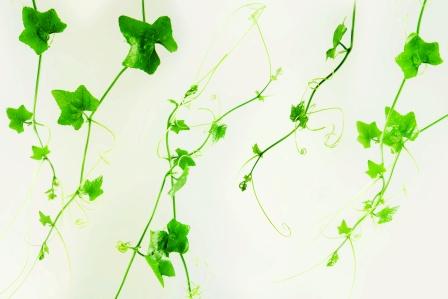
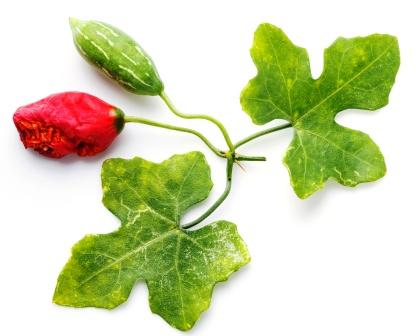
Habitat, cultivation
Bimbi plant is a climber, growing all over the temperate region of India. There are 2 varieties available- bitter variety available in the forests and the sweet variety cultivated as vegetable and used for culinary purposes. The fruits of the plant are oblong growing 4- 6 cm long, having whitish lines in the surface. The plant is a native to the African and Asian continent and grows wildly as a weed.
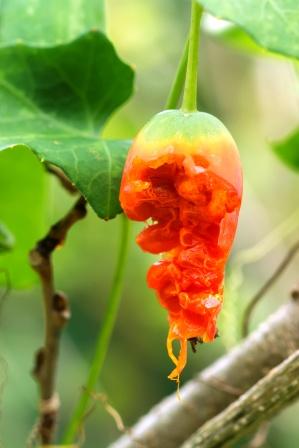
Classical categorization
Charaka Samhita- Moolini – Herbs with root as used part
Sushruta Samhita- Urdhwabagahara – group of herbs that are used for inducing vomiting
Dhanvantari Nighantu- Guduchayadi varga
Bhavaprakasha- Shaka varga – vegetable group
Kaiyyadeva Nighantu: Oushadhi varga
Raja Nighantu- Guduchayadi varga
Scientific classification
Kingdom: Plantae
Order: Cucurbitales
Family: Cucurbitaceae
Genus: Coccinia
Species: Coccinia indica, Coccinia grandis
Properties, Part used, Dosage
Ivy gourd – Coccinia grandis – medicinal Properties:
Rasa (Taste) – Tikta (Bitter)
Guna (Qualities) – Laghu (Light for digestion), Ruksha (Cause dryness), Teekshna (Strong)
Veerya (Properties) – Ushna (Hot in potency)
Vipaka –Katu (Undergoes Pungent taste after digestion)
Karma (Action) – Kaphapittahara (reduces the vitiated kapha and pitta dosha)
Ivy go
As per Bhojana Kutuhalam twelfth chapter, the leaves of bimbi is sweet in taste, cold in potency, treats vata-pittaja conditions, bleeding disorders, kamala, pandu, thirst and increases medhodathu,semen and aggravates kapha dosha.
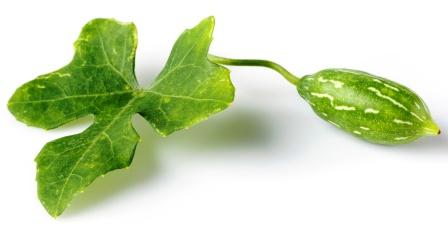
Part used– Leaves, Root (Medicinal purpose), Fruit (as vegetable)
Dosage-
Juice: 10-15 ml
Root: 3-6 g

Chemical constituents
The fruit of the plant contains beta-amyrin and its acetate, lupeol, B- Sitosterol, Taraxerol and cucurbitin B. Cephalandrol, cephalandrine A & B are found from the aerial parts. The root of the plant contains starch and carbohydrates.
Uses
Uses of Ivy Gourd – Bimbi:
- The root of the Coccinia grandis is made into paste and given in a dose of 3-5 g daily to control bed wetting in young children.
- The tender fruit of bimbi is chewed raw to treat mouth ulcers.
- The leaves of Coccinia indica are heated mildly and wrapped around the place of swelling to reduce swelling and pain associated with it.
- The fresh juice of the leaves is given in a dose of 10-15ml to treat wounds.
- The fresh juice of the leaves and root of Coccinia indica is given in a dose of 15-20 ml to control diabetes.
- The paste of the leaves is applied over the area affected with eczema and ringworm.
- The juice of the leaves and fruits of Coccinia indica is given in a dose of 20-25 ml to treat jaundice.
- The sweet variety of the bimbi fruit is used as a vegetable.
Sanskrit verse
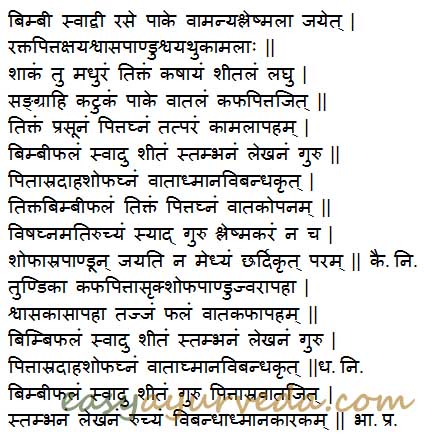
Ayurvedic uses, Indications
Ivy gourd fruit and root:
Vamani – excess usage may induce vomiting.
Ashleshmala – balances down Kapha Dosha
Indicated in –
Raktapitta –Bleeding disorders such as nasal bleeding, heavy periods, etc
Kshaya – depletion of body tissues, weight loss, tuberculosis
Shwasa – asthma and chronic respiratory disorders
Kasa – cough, cold
Pandu – anemia
Shvayathu – Swelling, inflammation
Kamala – Jaundice, Liver diseases
Ivy gourd leaves:
Madhura – sweet
Tikta – bitter
Sheetala- coolant
Laghu – light to digest
Sangrahi – absorbent, useful in diarrhea, IBS
Katu Vipaka (taste conversion after digestion) – pungent
Vatala – increases Vata Dosha
Balances Kapha and Pitta Dosha
The bitter ivy gourd calms down Pitta and is useful in Kamala – Jaundice, Liver diseases
Sweet Ivy gourd fruit:
Svadu – sweet
Sheeta – coolant
Stambhana – blocks the channel, useful in diarrhea, bleeding disorders
Lekhana – has scraping property, useful in balancing Kapha, in respiratory disorders and in cholesterol / clot deposition in blood vessels
Guru – heavy to digest
Vatadhmanakrut – may cause bloating, gaseous distension of abdomen
Vibandhakrut – may cause constipation
Indicated in –
Pittasra – Raktapitta –Bleeding disorders such as nasal bleeding, heavy periods, etc
Daha – burning sensation, as in gastritis, neuropathy, burning sensation in eyes etc
Shopha – inflammation
Bitter Coccinia grandis fruit –
Pittaghna – Calms down Pitta
Vatakopana – can cause increase of Vata Dosha
Vishaghna – anti-toxic, useful in poisoning
Ruchya – improves taste, relieves anorexia.
Guru – heavy to digest
Medhya – improves intelligence
Chardikrut – can induce vomiting
Indicated in –
Shopha – inflammation
Asra – blood disorders such as abscess, skin disorders, bleeding disorders such as menorrhagia, nasal bleeding etc.
Pandu – anemia
Adverse effects
Adverse action: There is no known or reported action of bimbi fruit. The bitter variety of the fruit may cause nausea and vomiting in some persons. It is also said in ayurveda that regular intake of bimbi phala may cause decreased intelligence level though no scientific studies have been carried out in this regard.
Interaction with medicines, supplements
Can this be used while taking Homeopathic medicine?
Yes. This product does not react with homeopathic medicine.
Can this medicine be continued while taking supplements like multivitamin tablets, Omega 3 fatty acids etc?
Yes. Generally, this product goes well with most dietary supplements. However, if you are taking more than one product per day, please consult your doctor for an opinion.
With western
medicines
Seek your
doctor’s advice if you are taking this product along with other western
(allopathic / modern) medicines. Some Ayurvedic herbs can interact with modern
medicine.
If both Ayurvedic and allopathic medicines are advised together, then it is
best to take Allopathic medicine first, wait for 30 minutes and then take the
Ayurvedic medicine.
Ayurvedic medicines
Ayurvedic medicines containing Bimbi:
Vastyamayantaka ghrita: This medicine has ghee as its base. It is used for preparatory procedures for Panchakarma and also as medicine, used in the treatment of diseases related to the urinary system. Vasti means urinary bladder. Amaya means disease. Hence this ghee is widely used for urinary system diseases.
Galacto plus granules: This is a proprietary ayurvedic medicine in granules form given for increasing and improving the breast milk in lactating women.
Research articles
Research articles on Bimbi:
Anti- hyperglycemic effect: Chronic administration of kundru fruit extracts (200 mg/kg) for 14 days reduces the blood glucose level of the diabetes induced animals as compared to diabetic control group. There was a significant decrease in the blood glucose level in the 7th [p<0.01] and 14th [p<0.001] days of the diabetes induction, showing the anti diabetic effect of the concerned fruit.
Anti- microbial activity: The bioactive compounds of fruits of Coccinia indica were investigated for antibacterial activity against some pathogenic bacteria. The aqueous extracts did not show much significant activity, while the organic extracts (petroleum ether and methanol) showed the highest activity against the test bacteria.
The activity was more pronounced on gram-positive organisms with Staphylococcus aureus being more susceptible and Salmonella paratyphi A being more resistant.
Anti- inflammatory and analgesic action: This study was aimed to evaluate both post- and pre-treatment anti-inflammatory activities of the aqueous extract of fresh leaves of Coccinia indica in rats using the carrageenan-induced paw oedema method at various dose levels. Analgesic and antipyretic properties were evaluated using tail flick model and yeast-induced hyperpyrexia, respectively. The extract produced marked analgesic activity comparable to morphine at 300 mg/kg, which suggests the involvement of central mechanisms.
Reno protective action: In the present study, the effect of Coccinia indica consumption on diabetes-mediated kidney damage was determined. Various parameters, such as fasting blood glucose, urine sugar, albumin excretion, kidney index, and glomerular filtration rate, were ameliorated to various extents by the supplementation of C. indica in the diet. Additionally, diabetic rats fed with a diet supplemented with C. indica fruits or leaves showed improvement in glucose tolerance compared to control diabetic rats. They also exhibited beneficial effects on key antioxidant enzymes of the kidney.
Author: Dr.B.K.Prashanth M.D (Ayu), Ph.D
E mail: [email protected]
Sthanika Karma (Systemic Action)
External Application – External Application – It has Anti inflammatory action. Leaf after making it hot; can be used for tying on swollen joints. leaf juice is indicated in wounds. Unripen fruit can be used for chewing stomatitis.
Internal administration-
Digestive system – Carminative, Liver stimulant. Purgative, Ant helminthic in action. Indicated in Loss of appetite, Jaundice, Liver disorders etc. For diseases of kapha and pitta dosha origin it can be given to induce vomiting.
Circulatory System – Blood purifier, relieve edema
Respiratory system – Eliminate vitiated kapha dosha from respiratory tract. Fruit and root are indicated in rhinitis, cough, asthma, etc.
Excretory system –Reduces urine output. Leaf and root juice is indicated in diabetes. (madhumeha, puyameha)
Tvak – Indicated in conditions associated with excessive sweating.











3 comments
SELIM AHMED
VERY GOOD ARTICLE
Satyendra Kumar
Something strange property it(Coccinia Indica/Bimbi/Ivy Gourd or Kundru) has. When you chop this vegetable you will find stange thing like never before with any vegetable.
When the sap water or the watery material from this vegetable get close contact with your palm skin for minimum 10minutes, you will stange, your skin gets sticky and when you try to remove this stickiness your finger skin gets spilling off like fruit spill(covers).
It fills that sticky material is just like Fevi Quick(instant adhesive) and your finger skin gets roughed for long hrs.
I do have found the same thing today which I never minded it earlier.
My short observation,
1) Close and long contact of its watery material leaves strange stickiness like no fruits and vegetables have(thick layer).
2) Trying to remove the stickiness resulting in loss of top most layer of skin of your palm or finger. Extra effort may hurt yourself(may be bleeding)
Please re-start your research and find what causes such thing degrading property or instant adhesiveness resulting roughness of palm/finger skin like Fevi Quick does with skin.
Dr. V. K. Gupta
It is very important to research the sticking phenomenon found by Satyendra Kumar and update the readers about it.